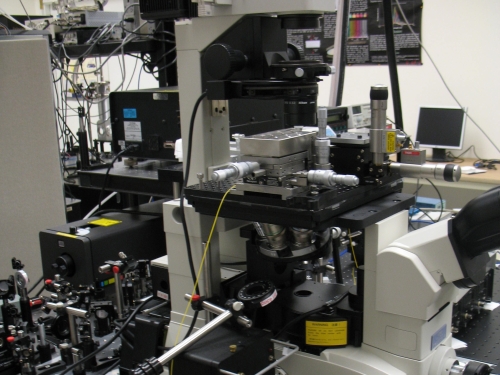
Research
Lasing polymers: We're developing dye-doped and conjugated polymer microlasers for sensing applications. When these devices are pumped above their lasing threshold, the signal intensity increases by anywhere from 100 to 100,000 times above the background. Lasing sensors may represent the future of microcavity sensing due to their incredibly strong response.
Greenhouse gas sensing: The levels of greenhouse gases in the atmosphere are considered important for several reasons. There's a strong demand right now to develop methane and CO2 sensors that can meet the needs of industry to detect leaks, as well as for the monitoring of background levels, emissions from melting permafrost, and and overall background levels. We are working on GHG sensors that can meet cost and sensitivity requirements, with our partners in industry.
Silicon quantum dots: With our collaborators in the Chemistry Department and in Germany, we are trying to understand how the surface chemistry controls the luminescence spectrum and dynamics of silicon quantum dots. One of the most amazing things would be to make a silicon laser this way, but no-one has ever acheived that yet. Students going into one of these projects would gain experience in both chemistry and physics experimentation and theory.
Graphene LEDs: In a collaboration with the National Institute of Nanotechnology, we're working on the development of graphene based electrical light emitting devices. Graphene is a very new material with extremely unusual and interesting physical and electronic properties, and shows light emitting capacity with several completely novel features.

Frequent Collaborators:
- Alex Francois, University of South Australia
- Sergey Vagin and Bernhard Rieger, TU-Munich
- Yanyan Zhi, Peking University
- Adam Bergren, NINT
- Jon Veinot, U of A Chemistry
